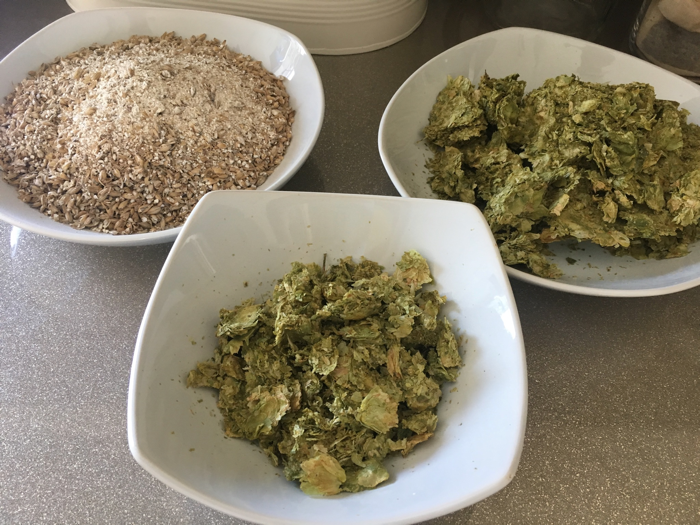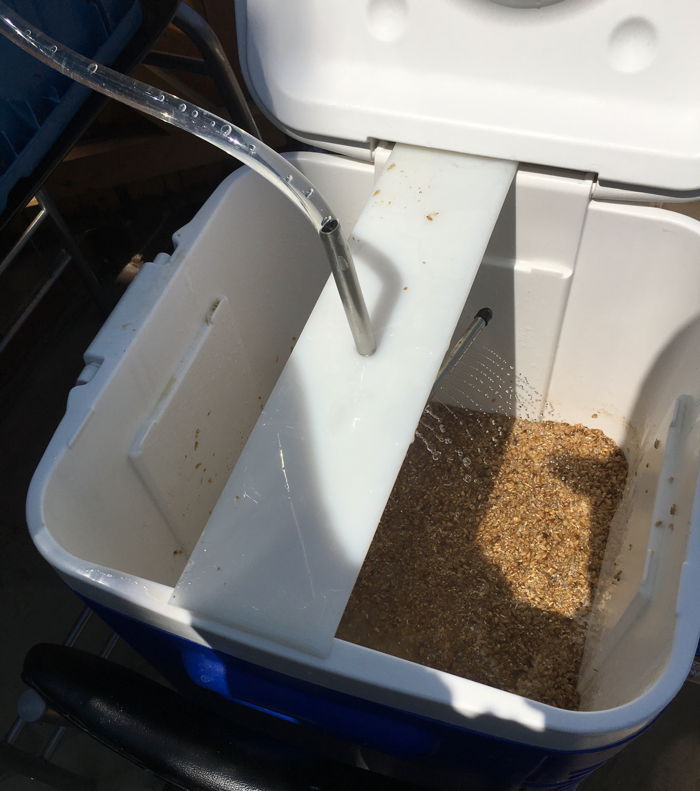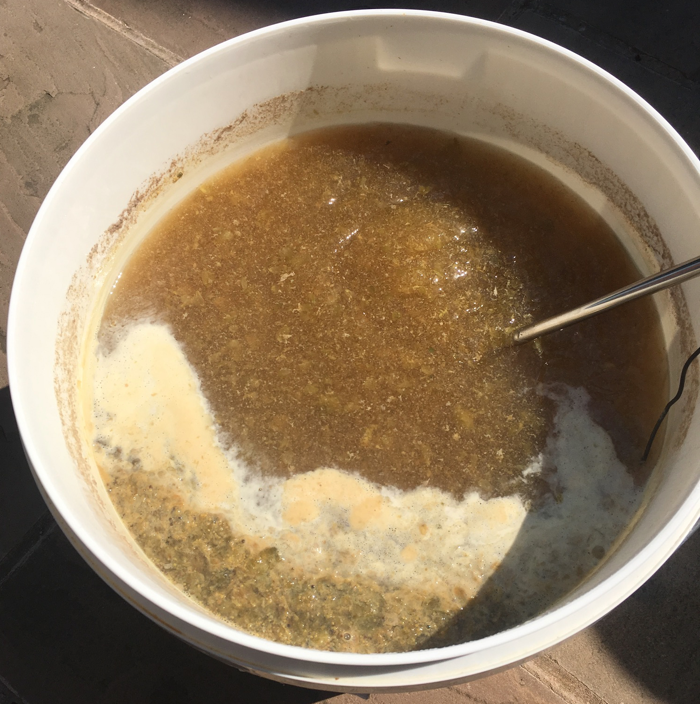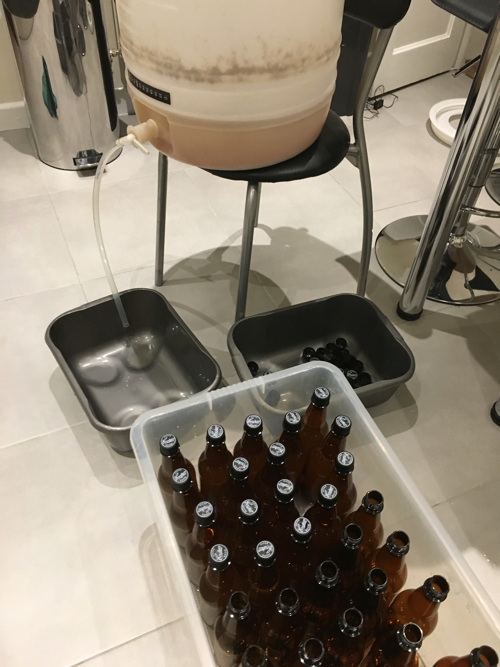Brewing Beer

Right now I’m drinking my 5th homebrewed beer. It tastes fantastic!

* * *
I’ve always wanted to try brewing beer. I finally got started about 20 months ago when, after discussing the subject over a beer with a friend from work, we found someone selling their entire kit on eBay only 20 miles from where I live.
There are three levels of brewing. The simplest is from a kit, where you are given all the ingredients and simply follow the instructions. You need minimal equipment and a number of popular brands of beer are available as kits. The next level up is brewing using a malt extract, which requires more kit but greatly increases the variety of beer you can make. Finally, there is full-mash (or all-grain) brewing, where given some grains, hops, water, and yeast, you do all the work required to make beer. You can make anything you can imagine.
I started with full-mash brewing.

It sounds harder than it is. Much like baking, you’re largely following steps and a recipe - at least when starting out. There are a few more steps, and there are a lot of factors to control if you want to make perfect beer, and it takes much longer than most baking, but still, it’s not that hard.

There are three main steps to brewing. Firstly, you need to create the wort. This is essentially water infused with sugars from the grains. Later, the yeast will eat through these sugars and turn this water into beer.
We typically start with around 15 litres of water1 at ~77c and add it to the grains in a mash tun2. We then leave this for an hour with the temperature maintained at around 71c. How well we control the temperature will affect how much sugar we get from the grains, so it’s important to get it right. But it’s not critical. It took me a few brews to get this right, as it was always getting too cold. The result was weaker beer than expected. But we still got beer!
After an hour we then collect this water, plus some more that is sprinkled over the grains to extract as much sugar as we can. The added water should be at the same temperature. We collect all this water (about 17 litres) in to our boiler.

Now starts the second stage. We boil the water for as long as the recipe states, typically just over an hour. We also at various stages add our hops. Adding hops at the start of the boil adds the bitterness to the beer. Adding hops later, or even at the end, will add hoppy flavours. Personally I’m a big fan of hoppy beers, so most of the brews I’ve made so far have included a lot of hops added throughout the boil.

Once boiled we need to cool the wort to around 22c or less, depending on the recipe. The quicker we can do this the better, as it’s not only yeast that love sugary water, plenty of other bacteria do too! For the same reason, from now on everything that touches the wort needs to be thoroughly cleaned and sanitised. Don’t be put off though! I’m sure I haven’t done this perfectly each time, and I still got decent beer!
When cooled, we add the yeast. Not only is the yeast responsible for converting water to alcohol, it will also impart flavours to your beer. This starts our third phase - fermentation, and will take around a week to complete. Again, temperature control is important here, probably more so than any other stage so far. But again, I haven’t yet been able to control temperature that well, and I’ve still got great beer!

Once fermentation is complete, we transfer to bottles with a little extra sugary water for conditioning. The yeast works through the sugar again, but this time the CO2 can’t escape and so adds a little fiz to your beer. In a few weeks (depending on the recipe), the beer is ready!

There’s a final mini step - naming and labelling. I create my labels on my PC and print them on to small bits of card, which I then hang round the necks of the bottles. This gives it a craft-like appearance and is also very easy to remove without any extra cleaning or scrubbing. I enjoy this part almost as much as making the beer!

Not only beer
It’s not only beer that can be made with all this knowledge and equipment. I’ve also made Elderflower Champagne following this recipe and it turned out pretty well. Similarly cider can be made, although I’m not really a cider drinker so unlikely I’ll be doing that.
Next steps
I’m still perfecting my brewing craft but starting to think about creating my own recipes. I’ve got Designing Great Beers sitting on my bookshelf which I plan to start reading very soon.
I also plan to build a fermentation chamber so I can tightly control the temperature during that all important fermentation phase. I’ve bought an old fridge from a charity shop, and have all the equipment, just need the time!
So here’s to many more great homebrewed beers 🍻.
